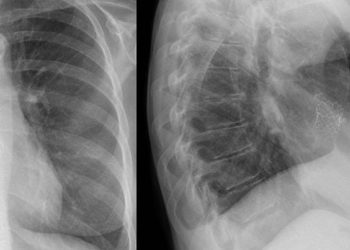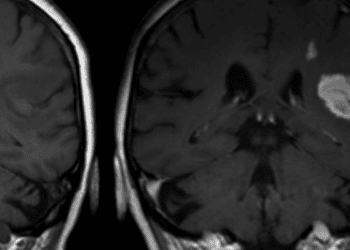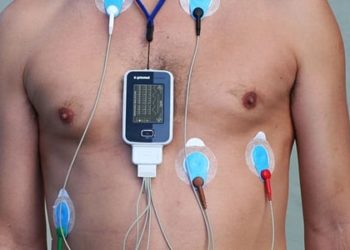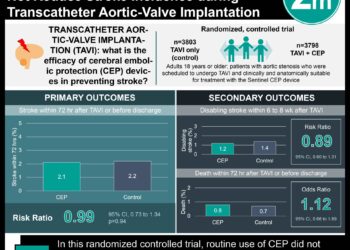Direct to angiography in transferred patients with large vessel occlusion stroke associated with faster treatment and better outcomes vs repeat imaging approaches
1. Transferred patients with a large vessel occlusion stroke undergoing endovascular thrombectomy may have faster treatment and improved outcomes from a direct to angiography (DTA) approach versus repeated imaging.
2. Optimizing endovascular thrombectomy workflow using a DTA approach when appropriate may be associated with faster and safer reperfusion therapy.
Evidence Rating: 2b (Good)
Study Rundown: Endovascular thrombectomy (EVT) is an effective, yet time-sensitive approach to the management of stroke caused by large vessel occlusion. The optimal approach to minimizing time delays when patients are transferred from non-EVT healthcare centers to those with the appropriate facilities has not yet been described. This multi-center retrospective cohort study sought to evaluate whether repeat imaging (CT) following patient arrival at an EVT-providing stroke center may be reasonably omitted. They compared patients going directly to the angiography (DTA) suite to those receiving repeat imaging for both time to therapy and health outcomes. The primary outcome was 90-day functional status. 2533 patients were transferred to an EVT stroke center during the study period (2014-2020), of which 1140 (45.0%) went on to receive EVT. Of these patients, 28.7% went DTA, while 71.3% received repeat imaging prior to EVT. The time from arrival at the EVT center to groin puncture (receipt of EVT) was consistently shorter in the DTA group; this approach saved a median time of 26 minutes compared to repeat imaging. The rate of 90 day functional independence was likewise significantly higher in the DTA group. The study trends each 10-minute delay in EVT as attributable to a 5% decrease in 90 day functional independence. These clinical benefits of the DTA approach compared to repeat imaging lessened in magnitude as the transfer time between healthcare centers increased. Sarraj et al provide supportive evidence for bypassing repeat imaging following stroke patient transfer for provision of EVT. A primary strength of this study is its large sample size: six stroke centers across Europe and the United States were included. The analysis is comprehensive, adjusting for factors such as staff availability and time of day to validate these findings. Additionally, the primary outcome is clinically meaningful to patients beyond reducing workflow delays. A major limitation of this work is its limited external validity – there are substantial differences in stroke response protocols regionally and the feasibility of rapid transfers and imaging equipment should be considered on a center-dependent basis. Additionally, the retrospective nature of this study makes it difficult to account for clinical characteristics which may influence the decision to repeat imaging upon patient arrival.
Click to read the study in JAMA
Click to read an accompanying editorial in JAMA
In-Depth [retrospective cohort study]: Patients were eligible for this multi-center, retrospective cohort study if they were aged 18+ and transferred from a non-EVT center to an EVT stroke center with a large vessel occlusion of the anterior circulation identified on imaging. The primary outcome of functional independence was measured using the modified Rankin Scale score. Patients were stratified on whether they received EVT within 0-6 hours of stroke onset (early window) or from 6-24 hours (late window) – DTA was found to significantly save time and improve outcomes in both cases. The median time to EVT was 34 minutes (Interquartile range [IQR] 20-62) in the DTA group and 60 minutes (IQR 37-95) in the repeat imaging group (p < 0.001). The adjusted odds ratio for 90-day functional outcomes in the DTA vs. repeat imaging group was 1.85 (95% confidence interval 1.33-2.57). The effect size was larger in the adjusted odds ratio compared to the naive odds ratio after accounting for certain patient factors (i.e., stroke severity score, serum glucose). There was a trend towards lower 3-month mortality in the DTA group as well, but this only reached statistical significance in patients treated with EVT in the early window (13.1% DTA group mortality, 21.7% repeat imaging mortality, p=0.01).
Image: PD
©2021 2 Minute Medicine, Inc. All rights reserved. No works may be reproduced without expressed written consent from 2 Minute Medicine, Inc. Inquire about licensing here. No article should be construed as medical advice and is not intended as such by the authors or by 2 Minute Medicine, Inc.







